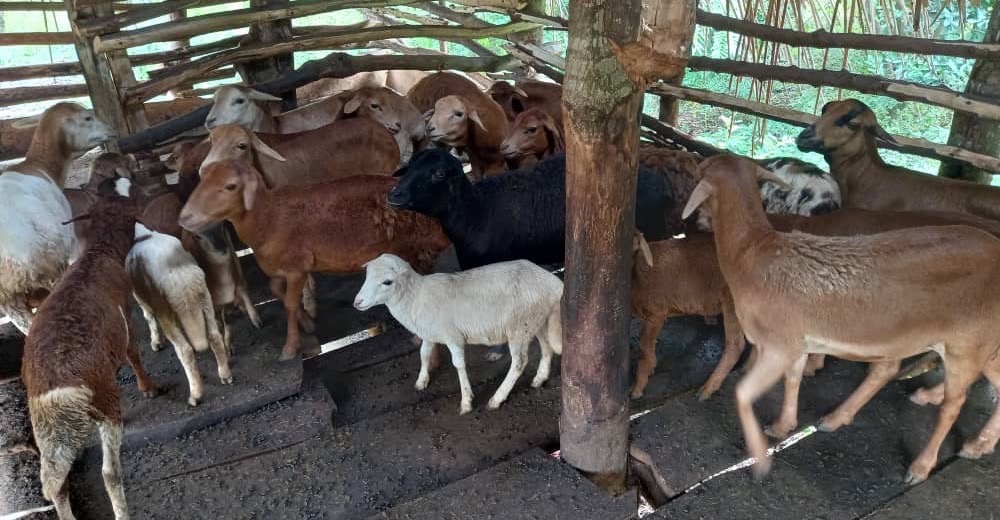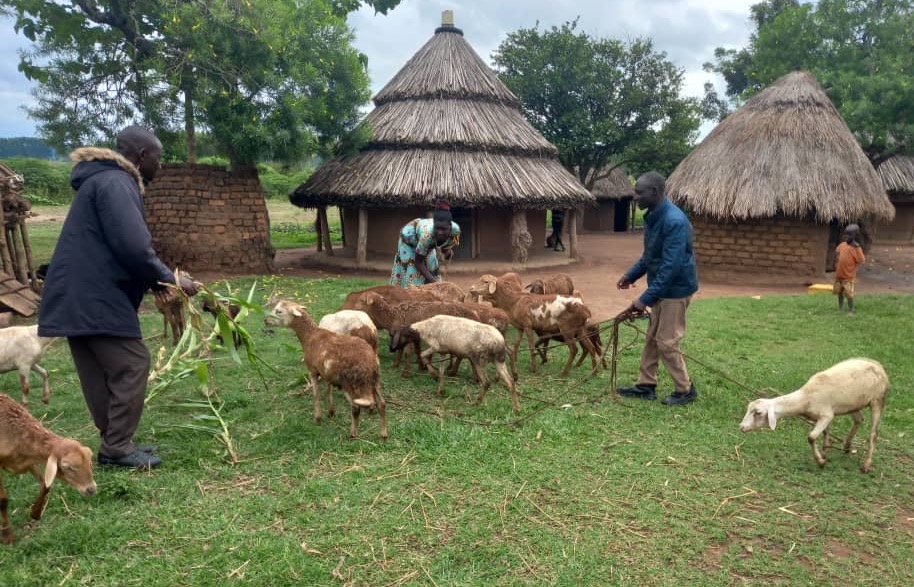The vast majority of the Ugandan people whom we disciple, train, and befriend with live an agricultural lifestyle. In fact, statistics say that 76% of the almost 50 million Ugandans live in rural areas and that 74% of Ugandans survive by agricultural means. This means that they live by what they grow in their gardens AND the livestock they are able to raise. In April, we were blessed to be able to help one local church start a sheep project that will multiply throughout the church and help improve the lives of church members, and the community they live in. Allow me to introduce you to the Kapuwai Sheep Project:
When we wanted to begin a project to help local Ugandans, we first started by asking the Lord to make clear a church leadership that we had good relationship with, and who we have seen growth in spiritual maturity – one that we could partner with. We thought of Kapuwai because we have discipled several church leaders from there who had an eagerness to grow in their own spiritual maturity, as well as a Christ-like leadership dynamic. When we sat down with them, we asked them about the lives of the church members: challenges, struggles, aspects of poverty that were more difficult for them, and ways that church members provide for their families. The prayer was that God would lead us into the RIGHT project for the RIGHT church…(We have seen and made the mistake of bringing a project that we think is good but doesn’t fit the area, and so it is doomed to fail from the beginning.) Through many conversations, we discussed several different ideas which did NOT work for Kapuwai, based on their knowledge/experience/desires or by our funds available.
Together, we came to the idea of keeping and multiplying sheep. The area where they live is largely flat and warm, so not disease-ridden, and people are used to keeping sheep. They have the local knowledge of how to treat, graze, and protect sheep, plus quality sheep are available in local markets, meaning the project is locally sourced (which helps with a number of aspects). So sheep were available; we just had to create the plan of how it would multiply to help all members from the church. The leaders came up with a strategy where, through the project, three people would receive nine sheep each. Then, every year another three people would receive nine sheep from those first recipients. This would occur every year until all members of the church had each received nine sheep from the other church members. (If you are wondering why they decided NINE sheep, the only reason is our budget for the project could only afford that many sheep…no hidden meaning or power in that number.)
So, this past April, we began by helping the project committee (selected by the church members) to buy the 27 sheep needed to begin the project. Before they could receive the sheep, they had to construct a local sheep pen that would provide protection and shelter for the animals, especially at night. And all the members of the church had to agree to the project outline. After these things were accomplished, they began buying sheep. Here are some pictures of the first group of sheep that they distributed:



Six months later, we have received some encouraging reports from the members of the church. First of all, all three recipients have multiplied their sheep, though not yet completing the nine to give to the next group of people: Andrew has his original nine sheep with seven ready to pass on; Justine still has his nine original sheep and is waiting for five more to give birth before passing on; and Albert has kept his nine sheep from April very well, waiting on only two more to give birth before passing on to the next person. Each of the three recipients have constructed houses for the sheep to be safe. (You can see a video at the bottom of this post as an example of one of the house.) All three people need to expand their sheep houses because the sheep are doing so well!
They work together to treat the sheep every month for any diseases that might be occurring, as well as deworming. They have found that their grass is enough for grazing, so that helps because they don’t have to buy any feed to give the sheep, which makes the project more sustainable. They care for the animals with passion because this has been an answer to their prayers throughout the years.
Pictured here is Justine’s wife, one of the families that received sheep from us. She is proudly displaying the nine sheep they were given, and the four lambs they have produced. This is a small, humble sheep house which needs some growth and security to keep the sheep safe. But the sheep are cared for and are helping the family to provide for themselves.
So, we continue to “Count Sheep” that the Lord has provided the members of Kapuwai Church of Christ. We will keep counting them until the whole church has been blessed. We ask that you lift up the members of the Kapuwai Church of Christ, and remember to thank God for the blessing of sheep!
If you want a sneak peak inside a sheep pen in a local community, check out this video: https://youtu.be/oOnaT58buLo




Pingback: 2023 in Retrospect | Sawyers In Uganda